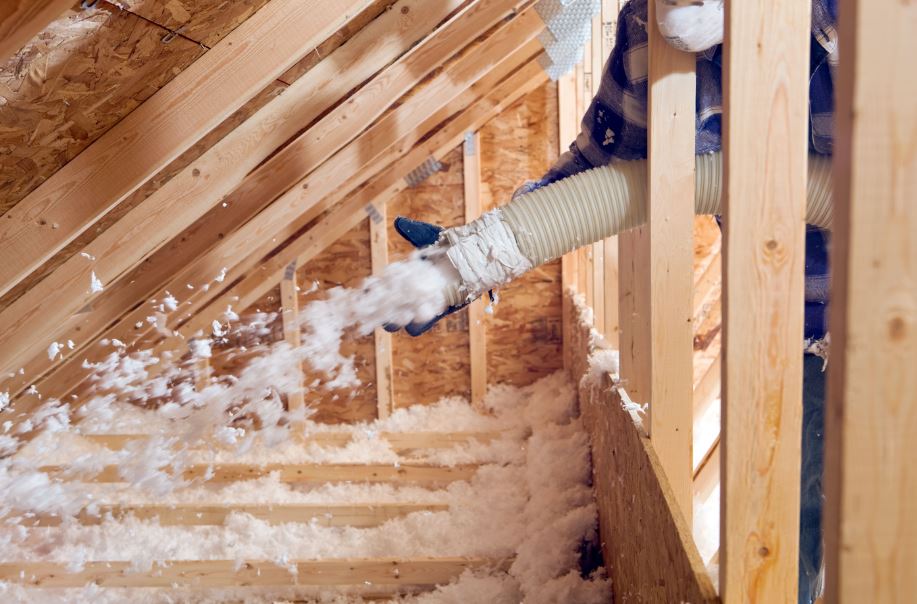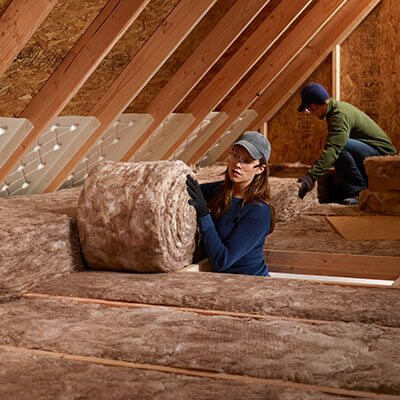Attic Insulation DFW: What You Required to Know Prior To Upgrading Your Insulation
Attic Insulation DFW: What You Required to Know Prior To Upgrading Your Insulation
Blog Article
Discover the Various Kinds Of Attic Insulation and Their Special Benefits for Your Home's Energy Efficiency
.jpg)
Fiberglass Insulation
Fiberglass insulation is among the most frequently used products for attic room insulation because of its superb thermal performance and cost-effectiveness. Composed of little glass fibers, this material efficiently catches air, creating a shielding obstacle that helps keep consistent interior temperature levels. Its high R-value per inch makes it especially effective at resisting warm transfer, which is vital for power conservation in homes.
Setup of fiberglass insulation is relatively straightforward, commonly available in batts or loose-fill kinds, accommodating different attic room setups. Furthermore, it is non-combustible and resistant to dampness, decreasing the danger of mold and mildew growth. This sturdiness adds to its longevity, making fiberglass a sensible lasting financial investment for homeowners.
In addition, fiberglass insulation is frequently manufactured from recycled materials, which improves its eco-friendliness. The product can likewise add to soundproofing, decreasing noise transfer in between rooms. While it is essential to use safety gear throughout installment to prevent irritability from the fibers, the general advantages of fiberglass insulation, including energy financial savings and ecological considerations, make it a preferred option for enhancing attic efficiency and advertising a comfortable living environment.
Spray Foam Insulation
Spray foam insulation is a highly reliable alternative for attic insulation, known for its superior air securing and thermal efficiency. This innovative insulation material is composed of a mix of isocyanate and polyol material, which, when incorporated, broadens swiftly to load spaces and cavities in the attic area. Its ability to stick to various surfaces makes certain a continuous barrier against air leaks, dramatically minimizing heat loss during colder months and heat gain throughout warmer periods.
One of the crucial benefits of spray foam insulation is its high R-value per inch, which indicates it offers superb thermal resistance in a reasonably slim application. This is particularly useful in attic rooms where space is frequently minimal. Furthermore, spray foam can help minimize dampness accumulation, reducing the danger of mold and mildew and mildew development, which can be detrimental to both the framework and interior air quality.
While the first cost of spray foam insulation may be greater than traditional alternatives, its long-term power cost savings, combined with raised convenience and boosted home worth, make it a rewarding financial investment for property owners seeking boosted energy efficiency. Attic Insulation DFW. In general, spray foam insulation stands out as an effective remedy for enhancing attic insulation
Cellulose Insulation

Cellulose insulation is a popular choice for attic insulation, primarily made up of recycled paper items treated with fire retardants. use this link This eco-friendly option is recognized for its outstanding thermal efficiency, successfully reducing warm transfer in both summer season and winter season. The dense composition of cellulose enables it to fill up gaps and gaps in attic areas, providing a seamless obstacle versus air leakages.
One of the significant benefits of cellulose insulation is its capability to stand up to mold and mildew and parasites, owing to the fire resistant treatments made use of during production. In addition, it boasts a high R-value per inch, which translates into premium energy effectiveness. Property owners can anticipate reduced heating and cooling prices as a result of enhanced insulation.
Setup is usually accomplished through blowing loosened cellulose into the desired area, enabling a quick and effective process. This approach likewise lessens disturbance to the existing structure. Additionally, cellulose insulation has a reasonably reduced ecological impact, as its production process uses recycled materials, adding to sustainable structure techniques.
Rock Woollen Insulation
Amongst the various choices for attic insulation, rock woollen, likewise referred to as mineral woollen, sticks out as a result of its remarkable thermal and acoustic efficiency. Made from recycled or natural materials, rock woollen is developed by thawing rock and spinning it into fibers, causing an item that supplies superb insulation residential properties.
Among the substantial benefits of rock wool insulation is its high R-value, which suggests its effectiveness in resisting warm flow. This characteristic not just boosts power effectiveness however also contributes to maintaining a comfy interior temperature level year-round. Furthermore, rock wool top article is inherently fire-resistant, making it a safer choice for homes as it can endure high temperatures without melting or releasing hazardous fumes.
In addition, rock woollen insulation stands out in soundproofing capacities, efficiently reducing sound transmission between rooms and from outdoors resources. In general, rock woollen insulation provides a detailed solution for improving power efficiency, security, and convenience in residential settings.
Glowing Barrier Insulation
Radiant barrier insulation functions as an effective service for lessening warmth transfer in attics, specifically in warmer climates. This sort of insulation works by showing convected heat away from living areas, thereby minimizing the amount of warm that gets in a home during hot climate - Attic Insulation DFW. Usually composed of a highly reflective material, such as light weight aluminum foil, glowing barriers are installed in attics, dealing with the roofing, where they can obstruct inbound warmth from the sunlight
The key advantage of glowing barrier insulation is its capacity to reduced cooling costs. By showing heat instead of absorbing it, glowing barriers can help maintain a more stable indoor temperature, decreasing the workload on air conditioning systems. This efficiency translates into reduced power costs and raised convenience for home owners.
Along with power financial savings, glowing barriers can likewise contribute to improved indoor air top quality. By lowering warmth build-up, they assist reduce humidity levels, which can protect against mold and mildew development and enhance overall air blood circulation. When mounted appropriately, radiant barrier insulation can be an indispensable addition to any energy-efficient home, making it a worthwhile factor to consider for property owners wanting to improve their attic insulation approach.
Final Thought
In verdict, understanding the different kinds of attic insulation-- fiberglass, spray foam, cellulose, rock woollen, and glowing barriers-- allows homeowners to make educated choices concerning energy performance. By selecting the proper insulation product, significant reductions in power costs can be accomplished, along with improvements in interior comfort.

In conclusion, comprehending the various types of attic insulation-- fiberglass, spray foam, cellulose, rock woollen, and radiant barriers-- makes it possible for home owners to make informed decisions regarding power effectiveness.
Report this page